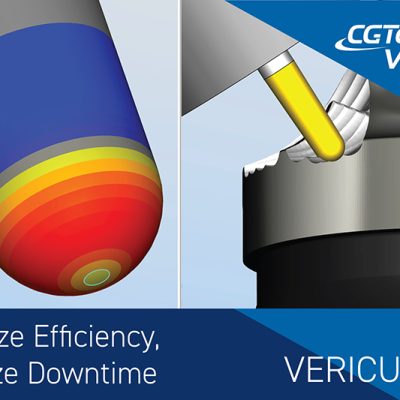Description
GOHFER Software
GOHFER is a multi-disciplinary, integrated geomechanical fracture simulator that incorporates all the tools necessary for conventional and unconventional well completion design, analysis and optimization. GOHFER, which stands for Grid Oriented Hydraulic Fracture Extension Replicator, is a planar 3-D geometry fracture simulator with a fully coupled fluid/solid transport simulator. GOHFER has been continually developed and refined by Dr. Robert D. Barree & Barree & Associates LLC for almost 40 years.
According to the 2017 Worldwide Survey of the Market for Hydraulic Fracturing:
- GOHFER 3D is the #1 preferred fracture simulator in the industry by greater than a 2:1 margin!
- 58% of operators choose GOHFER for their hydraulic fracturing simulation needs
- GOHFER 3D is also considered to be the most accurate fracture simulator in the industry increasing its lead from 2016 to almost a 4:1 margin over its closest competitor
~ Kimberlite International Oilfield Research
GOHFER 3D is leading the industry into the future with the most current research and technology while challenging outdated philosophies and paradigms giving you more confidence and predictability in your completion strategy. GOHFER’s formulation has been used extensively and successfully in all regions globally in all types of reservoirs and does not require a special module for individual environments. GOHFER’s timely technical support and comprehensive software documentation is unparalleled in the industry.
- GOHFER 3D can handle multiple wells, including vertical and horizontal in the same model
- Multi-layer completions, zipper fracs and offset depletion effects
- Full 3D geo-mechanical earth model input or optional input of 2D surface map with digital reference well log data
- Variable inter/intra-stage fracture stress shadow interference between each fracture and stage on each well
- Wellbore breakdown gradient and angle & breakdown pressure and orientation calculations
- Geosteering of laterals and engineered completions
- Models both the longitudinal and transverse fracture components
- Pressure diagnostic analysis, production forecasting and rate transient analysis
GOHFER is separated into 5 modules that may be purchased or leased independently which allows you to customize your GOHFER package to your needs. Select a module below to learn more.
Petrophysical Analysis – Comprehensive petrophysical analysis package with built-in synthetic correlations for mechanical rock properties and gas identification. QC or replace poor or absent sonic data and ability to incorporate core data.
![]()
Fracture Simulation & Production – Finite difference gridded solution assuming shear/slip fracture geometry (not linear elastic). Vertical and horizontal anisotropy, spatially variable leakoff and limited entry design/multiple simultaneous fracture initiation sites. Handles impact of secondary fracture systems on fluid leakoff/proppant transport and geometry. 3D Complex horizontal fracture modeling – longitudinal and transverse components. Variable inter/intra-stage fracture stress shadow interference factor. Multi-stage/multi-cluster modeling capability for plug & perf or ball drop simulations. Fracture orientation determined by stress azimuth, independent of well direction.
GOHFER Production handles cleanup, multiphase non-Darcy flow and stress (proppant crushing) based on 30 years of Stimlab Inc. research. Handles production interference of multiple transverse fractures and allows for optimization of fracture spacing in unconventional reservoir development.
![]()
Pressure Diagnostics – Complete pressure diagnostic analysis package including step rate and blowdown analysis; fracture closure analysis and determination and effects of primary leakoff mechanism; after closure analysis for pore pressure and permeability. Also includes a permeability estimation from G function analysis.
![]()
Production Analysis – Uses actual production data to analyze post-frac performance and assess stimulation effectiveness. Includes rate transient type-curve analysis, decline curve analysis, production forecasting to ultimate recovery, and flow regime identification. Determines fracture spacing and effective well spacing for horizontal wells, along with the fraction of the lateral producing.
![]()
Real-Time – Direct importation of streaming or internet real time data with real time pressure diagnostic analysis, fracture simulation and calculated bottomhole pressure.
New GOHFER 3D 9.0 Features
• Ability to add multiple wells, including vertical and horizontal, in the same project
• Fracture stress shadow interference between each fracture and stage on each well
• Can simulate: Multi-layer completions / Zipper-fracs/ Offset Depletion Effects
• Full 3D geo-mechanical earth model input (from Petrel GSLIB file)
• Optional input of 2D surface map with reference well logs
• Geo-steering of laterals and engineered completions
• Full processing of log or “core” from 3D earth model
Zipper-Frac Interference Offset Well Depletion Effect on Total Stress
Example Total Stress Imported from 3D Model Multi-Layer Completions
Well Construction
• Can define coordinate system and site/ well locations
• Ability to convert latitude and longitude to state plane
• Ability to lookup state plane zone by county
• Ability to display location on map
• Ability to view surface map (and layers) of all wells
• Removed option to Add Reference Survey and LAS option in Well Construction
• Removed option to Convert Treatment LAS to Reference LAS option in Well Construction
• New Project Type options:
o Single Vertical Treatment Well / No Transverse Fractures
o Multiple Treatment Wells / Enable Transverse Fractures
• Wellbore string inputs now accessible from each individual well under Well Construction
or from the well tab under Geologic Section
• Disabled MD/TVD mode in survey. MD/INC/AZI required.
• Added GSLIB viewer
• Added link to State Plane and UTM conversion tools
• Fixed an issue with right click paste in Well Construction/Well Locations table
Log Processing
• Reference LAS input data options:
o Reference well logs only (no geologic model available)
o Reference well logs and core sample(s) taken from an imported geologic model
o Core sample(s) taken from an imported geologic model (no reference well logs)
• Moved PORE_P_LAS and STRESS_TOTAL_LAS to bottom of PORE_P_SRC and
STRESS_TOTAL_SRC so they will no longer be automatically used if they are mapped.
To use these curves, the user must manually move these to the top of the list.
• Moved LAS Assignments to the top in LAS Processing/GOHFER Curves column
• Added a change to prevent user from shifting or scaling PORE_P_SRC or PORE_P_EST
• Added the following new LAS curves:
o AVH / PHIS / YMELAS / DTCYME / NETPAYEST / SWEST / BIOTS_VPHIE
Grid Setup
• Simulation mode options:
o Transverse Only
o Transverse + Longitudinal
o Longitudinal + Transverse
• Default node size now set to 5 ft
• Further separated and reorganized grids into separate folders (Grid properties and
Intermediate Calculations)
• Tabs for each wellbore
• Ability to see multiple wells in transverse grid tabs
• Added Map view option to grid setup
• Ability to add faults in map view
• Ability to view geologic model scatter plot in map view
• Added the ability to change the map layer in Treatment Configurations/Wellbore tab
• Addressed issues with renaming designs affecting stage shadowing
• Ability to export grid data to geologic model in GSLIB format
• Added a Fit to Ruler option in the Engine output for Node Width
• Removed V/H Factor from the PZS and PHOLD grid. Now handled by the AVH grid.
• Renamed Baseline Conductivity output grid to Effective Conductivity
• Each simulation now generates a triplets file in gslib format (*.triplets.gslib) in addition
to the triplets.csv file
• Added the option to select which curves to export to the triplets file
• Added wellbore stability calculations and ability to export the data
Engine Output Viewer
• ALL simulations are now asymmetrical. Symmetrical fractures are no longer simulated.
• Fixed an issue metric projects that displayed the perf MD at the bottom of the screen in
oilfield units instead of metric units
• Fixed an issue with the pipe friction calculation for BHP in the engine
• Fixed an issue with the Ruler for proppant cutoff length not working on vertical well
projects
Pressure Diagnostics
• Removed option to override auto-calculated hydrostatic head in the Well Configuration
inputs
• Updated equation for permeability estimate from G Function
Production
• Fixed an issue with the New Fracture Data Available message not updating properly
• Addressed an issue where production would not open after running simulations in batch
mode
Production Analysis (GPA)
• Redesigned and reorganized input and output results screen
• Rename Num Transverse Fracs to Number of Stages
• Added context sensitive help
Fluid Database
• Updated Fluid Database
• Fixed an issue with the pipe friction plot calculations
Proppant Database
• Updated StimLab database of proppants
• Proppant grading is now provided to inform users of differentiation in terms of
quality/timeliness of conductivity data
Miscellaneous
• Ability to convert previous projects to v9.0
• Ability to view all wellbores, fractures and map view layers on the Geologic
Section/Wellbore tab
• Updated Sentinel Run-Time Environment (v7.60)
• Fixes and enhancements to the Undo Feature
• Fixed an issue with remembering a user adjusted Modulus Stiffness Factor
• Updated HTML based help file
System Requirements
GOHFER 3D System Requirements:
Operating System (Windows 10 recommended)
- GOHFER 3D – Windows 10/8/7
- Sentinel LDK Run-Time Environment v7.63
- Windows 10 (Version 1703 & 1709) / 8.1 SP1 / 7 SP1 / 7 SP1 Embedded standard (x86)
- Windows Server 2008 R2 SP1 / 2012 R2 / 2016
- For a list of supported virtual environments, please visit http://sentinelldk.safenet-inc.com/LDKdocs/RN/
Processor / Memory:
- 7th generation processor recommended (recommend upgrading if older than a 6th generation processor).
- Minimum quad core processor recommended. 6 core processor is considered ideal.
- Utilizes multi-threading and will benefit from multiple processors.
- Non-geologic model projects 8 MB RAM recommended minimum. Geologic model projects > 16 GB ram recommended.
Video Card:
- Minimum 512K memory video card.
- Recommend 2GB video memory. Main recommendation is that the card has its own memory rather than sharing main memory.
Engine Priority Options:
In the Run Engine Options in v9.1, the priority level of the simulation can be set. Recommendations are shown below based on number of cores.
| Setting | Priority | Recommendation |
|---|---|---|
| Background | low priority with ½ the cores | Recommended setting for dual core |
| Foreground | normal priority with all the cores | Best for most users |
| Max Performance | high priority with all the cores | Quad core or above recommended |
For Additional Performance, consider adding the following:
- An Nvidia graphics card with 4 GB ram
- 32 GB ram
- 12 core (Intel I9 Equivalent or above) processor


















Reviews
There are no reviews yet.